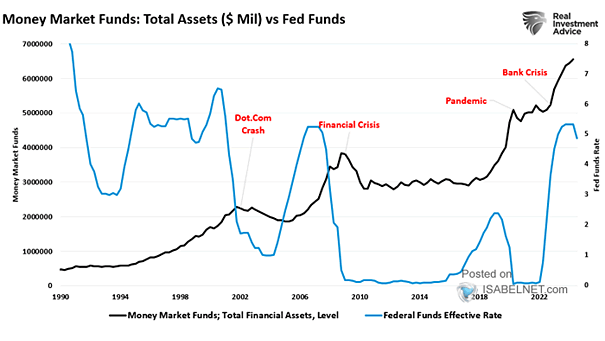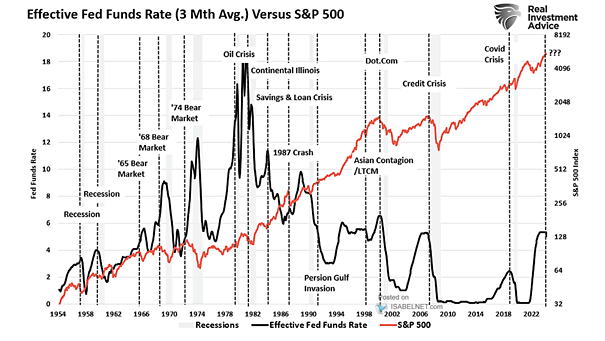U.S. Money Market Fund Assets vs. Federal Funds Effective Rate
U.S. Money Market Fund Assets vs. Federal Funds Effective Rate U.S. money market funds are sensitive to changes in interest rates, and historical trends indicate that they often experience outflows approximately 12 months after an initial Fed rate cut. Image: Real Investment Advice


